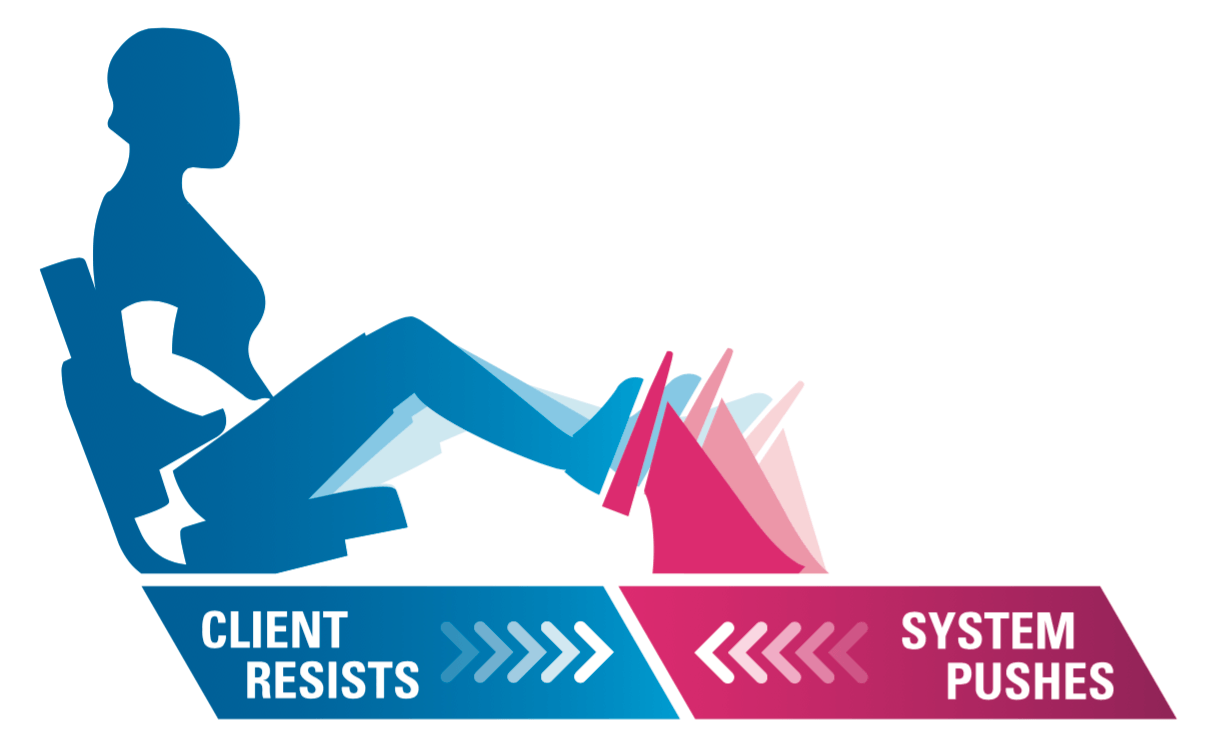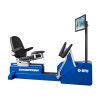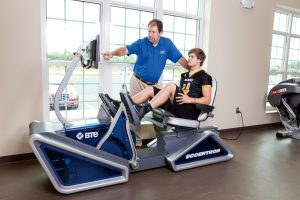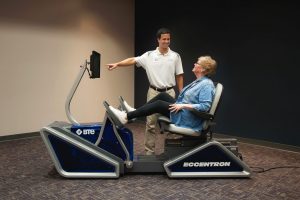
Eccentrics in Rehab and Fall Prevention
Treatment GuidelinesResearch has been gradually amassing over the years in favor of eccentric training. Many controlled trials show increased strength, size, and control of muscles after eccentric training.
Eccentrics is foundational to almost any rehabilitation program, whether for physical therapy clinics or athletic training facilities. Although the concept of eccentrics has been around for decades, many of us still do not fully understand how to use it, or the extensive benefits that it can add to our treatment plans. In this article we break down the basics of eccentric training, why it is important for rehabilitation and fall prevention, and how you can incorporate it into your practice.
What is Eccentric Training?
Generally, most exercises have two distinct phases: concentric and eccentric. The concentric phase of an exercise happens when your muscle is shortening. This is usually the phase where you are working directly against gravity or a pulley system. Most people work hard through this part of the motion, then quickly return to the starting position.
On the other hand, the eccentric phase of an exercise happens when your muscle is lengthening. This is usually the phase where you are moving with gravity or a pulley system in a controlled fashion.
Eccentric training is formally defined as controlled lengthening of a muscle while a load is applied to it1. This means that during exercise with eccentric focus, more time is spent during the lengthening or lowering phase of the exercise. Eccentric-focused exercise places a different form of stress on the muscle compared to a standard concentric focus.
Current Research
Research has been gradually amassing over the years in favor of eccentric training. Many controlled trials and systematic reviews now support findings of increased strength, size, and control of muscles trained using eccentric training2,3. These improvements translate to a healthier musculoskeletal system and may play an important role in long-term joint health4.
For example, a recent study found that eccentric-only exercise yielded four-times-higher higher muscle activation than traditional (concentric-eccentric) exercises. With a higher level of muscle activation, you can achieve better gains, more efficiently.
How Eccentrics Improves Rehab Outcomes
Many physical therapy and rehabilitation programs focus on exercise to treat common conditions like tendinopathy, degenerative joint disease (DJD), and osteopenia. While standard exercises with a concentric focus may be highly effective treatments, incorporating eccentric training is shown to improve rehab outcomes for many conditions1,4,5.
Specifically, research favors the use of eccentrics over traditional exercise for sarcopenia, ACL recovery, tendinopathy, and several other common conditions.
Why Eccentrics Can Prevent Falls
In addition to general rehab, eccentric training is beneficial for fall prevention programs. Falls are one of the most common causes of serious injury in the elderly population, and a fear of falling can be a part of everyday life for many of our loved ones6. A few common causes of increased fall risk are loss of balance, agility, or strength.
By incorporating eccentric training into a fall prevention program, you can help clients increase muscular strength and control. This can improve steadiness and ability to tolerate changes in their environment. This is especially true during position changes that require control, like sit to stand.
Incorporating Eccentrics Into Your Practice
The best part about eccentric training is that it is very easy to include in your rehab program. One of the most effective ways to isolate the eccentric contraction is with the BTE Eccentron. This unique rehab equipment utilizes an eccentric-only resistance system to train the lower extremities strength in a safe, objective way. Instead of focusing on the concentric phase, the client is only doing active work during the eccentric or resisting phase.
With its interactive visual feedback, the Eccentron is engaging and easy to use for routine eccentric training. The Eccentron is especially useful for elderly clients because you can lower the resistance to a safe post-op level. On a low setting, this exercise is the equivalent of walking down the stairs with reduced bodyweight. This customizable resistance makes it an effective option for aging clients to improve strength and balance7.
Putting It All Together
In conclusion, eccentric training can be a powerful tool for increasing strength, rehabilitating injuries, and decreasing fall risk. If you work with elderly, injured, or post-op clients, they likely can benefit from eccentric-focused exercises. For more information about incorporating eccentrics in rehab, check out these other resources from TherapySpark:
- E-book: ACL Recovery Unlocked with Eccentric Strengthening and Motor Control
- Webinar: Everything You Need to Know About Eccentrics
- Eccentrics for Cardiorespiratory / COVID-19 Recovery
- Fall-Related Deaths Rise 30%. Here’s how you can reverse the trend
- Sarcopenia Prevention with Eccentric Exercise
- Beyond the Basics: Eccentrics’ Versatility in Rehab
- EMG Research shows 4x Muscle Activation with Eccentron
- Build a Better Fall Prevention Program with Eccentric Exercise
Alex Stone, DPT, CSCS
Connect on LinkedIn
Follow on Instagram
References
- Murtaugh, Bryan MD; M. Ihm, Joseph MD Eccentric Training for the Treatment of Tendinopathies, Current Sports Medicine Reports: May/June 2013 – Volume 12 – Issue 3 – p 175-182. doi: 10.1249/JSR.0b013e3182933761
- Douglas, J., Pearson, S., Ross, A. et al. Chronic Adaptations to Eccentric Training: A Systematic Review. Sports Med 47, 917–941 (2017). https://doi.org/10.1007/s40279-016-0628-4
- Elizabeth H., Kirk J. et al. Effects of concentric and eccentric training on muscle strength, cross-sectional area, and neural activation. Journal of Applied Physiology. 01 NOV 1996. https://doi.org/10.1152/jappl.1996.81.5.2173
- Camargo PR, Alburquerque-Sendín F, Salvini TF. Eccentric training as a new approach for rotator cuff tendinopathy: Review and perspectives. World J Orthop. 2014;5(5):634-644. Published 2014 Nov 18. doi:10.5312/wjo.v5.i5.634
- Lorenz D, Reiman M. The role and implementation of eccentric training in athletic rehabilitation: tendinopathy, hamstring strains, and acl reconstruction. Int J Sports Phys Ther. 2011;6(1):27-44.
- Ungar A, Rafanelli M, Iacomelli I, et al. Fall prevention in the elderly. Clin Cases Miner Bone Metab. 2013;10(2):91-95.
- Johnson SL, Fuller DK, Donnelly B, et al. Effect of an 8-week eccentric training program on strength and balance in older adults. Intl J Exerc Sci. 2018;11:468-478.






